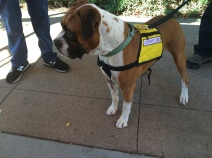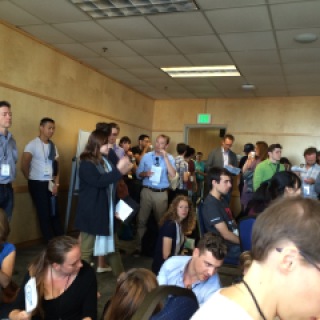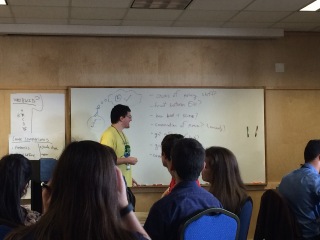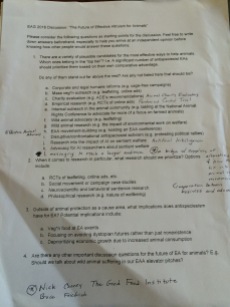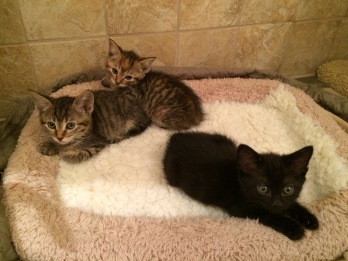
Talk is cheap. Actions speak louder than words. Practice what you preach. Well done is better than well said. Walk the walk, talk the talk. It was George Bernard Shaw who wrote in 1903 in the play Man and Superman, “He who can, does. He who cannot, teaches.” You can talk a good game but be full of empty promises.

From Shakespeare, who said everything better than anyone else, in Richard III:

Fear not, my lord, we will not stand to prate;
Talkers are no good doers: be assured
We come to use our hands and not our tongues.

In other words, yep, shut up, we are here to get shit done.
Apparently, in the UK they say someone who is full of those empty promises is “all mouth and no trousers.” Which makes me think of the Wallace and Grommit movie The Wrong Trousers.

Last month I attended my last required residential conference for my doctoral program at Saybrook University. No, that doesn’t mean I am anywhere near completion! One of the sessions I attended was about identifying our values and then living and leading by them. After we each winnowed a 2 page list of terms down to our personal top 3, we had to write the 3 on the backs of the name badges we wore throughout the conference.

Since I could never make my badge hang right anyway, for the rest of the conference, what people saw if they looked was not my name but the words I had written. I kept waiting for someone to ask me about it, but no one did.
Maybe everyone thought I had the adorable hippie name Kindness Compassion Love. It’s easier to spell and pronounce than my actual name.
But I was quickly tested on living by my values. Of walking the walk. Of proving I wasn’t all mouth and no trousers. It wasn’t so easy. In that same values session, we broke out into small groups to discuss examples of leaders who we think of as living by their values. Normally in these sessions, our political alignments tend to be fairly aligned. I mean, come one, it’s an alternative university with twice yearly meetings in Monterey, California. Not a huge bastion of conservative Republicanism; in other words, it’s not Trump country. Just saying. But we are all allowed our own views and the safe space to express them, yes? And there are students at Saybrook from all over not just the country, but the world.

The first student in our group, a new student in her first semester, prefaced her choice by saying that she realized she would be the only one in the room to choose who she was about to name. Then she said that to her, Trump (she said President Trump, which I refuse to do) is second only to God in leadership and values, and that she admires his family values and people skills. No joke. I sat in stunned silence for a moment. She was clearly serious, and I have to admit it took courage for her to take this stance in this group of people. She knew she was a minority of one. My mantra of “kindness compassion love” looped through my thoughts. I smiled, I babbled. I was friendly. Later, I made an effort to befriend this student. I could tell she felt lonely and somewhat ostracized in the group. Others, also shocked but wanting to walk their walk as well, talked to her, engaged her, made their best efforts to include in her group activities. But even though she seemed to relax a bit, she still kept herself somewhat separate from the class.

It was an uncomfortable feeling to find myself so clearly tested on my values. I came away hoping I had learned a lesson in tolerance. And then it happened again at work.
Not a Trump incident, but in dealing with a difficult person in a public setting as a representative of the organization for which I work.
I work at an animal shelter. Emotions can run high in both directions. Yes, pople are often overjoyed at meeting their new best friend and getting to take them home. But people also cry over lost and deceased pets. They get upset when the animal they want to adopt has been adopted by someone else. They get frustrated when we don’t have the answers they want to hear. And we get frustrated when we are trying our best and the situation is still going downhill despite our best efforts. (Check out this list of tips from Psychology Today.)
There is a woman who lost her cat. She comes to the shelter looking to see if we have her cat. That’s reasonable. I would do the same. She is sad and angry about her missing cat. I get it. She is frustrated. Desperate even. She is not easy to talk to. Her anger and emotions get in the way. She perceives she is being treated badly, that people are being rude to her. I spent about half an hour with her, doing my best to practice kindness, compassion, love. To exercise my empathy muscles. Reminding myself that she is a very unhappy person and to be treated gently. It wasn’t easy, but I did my best. We did not have her beloved kitty. I hope she finds him. I hope she comes to realize some inner peace.

As for myself, I will always be a work in progress. I have to exercise those empathy muscles so they don’t atrophy. To remind myself not to turn a blind eye to people who are homeless, to not turn my head the other way when I see suffering, to not bury my head in the sand when I don’t want to know what horrible things are happening in our world. Apathy is not one of my values, and I must do my best not to let it lull me to inaction or avoidance.

In the words of essayist/philosopher/poet/filmmaker Suzy Kassem, “Apathy is the door to ignorance. Empathy is the door to wisdom.”

I want to be wise, not ignorant. So I am going to put on my trousers and get out there walking.

Peace and hugs.

















